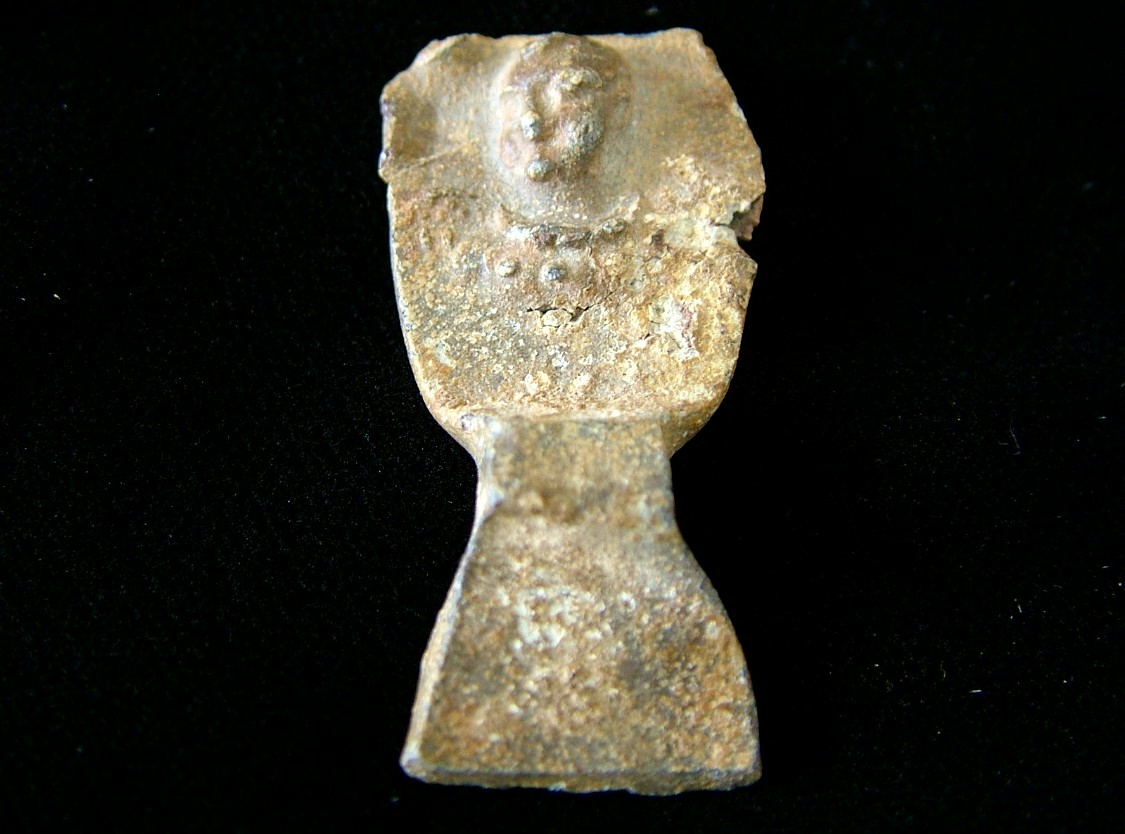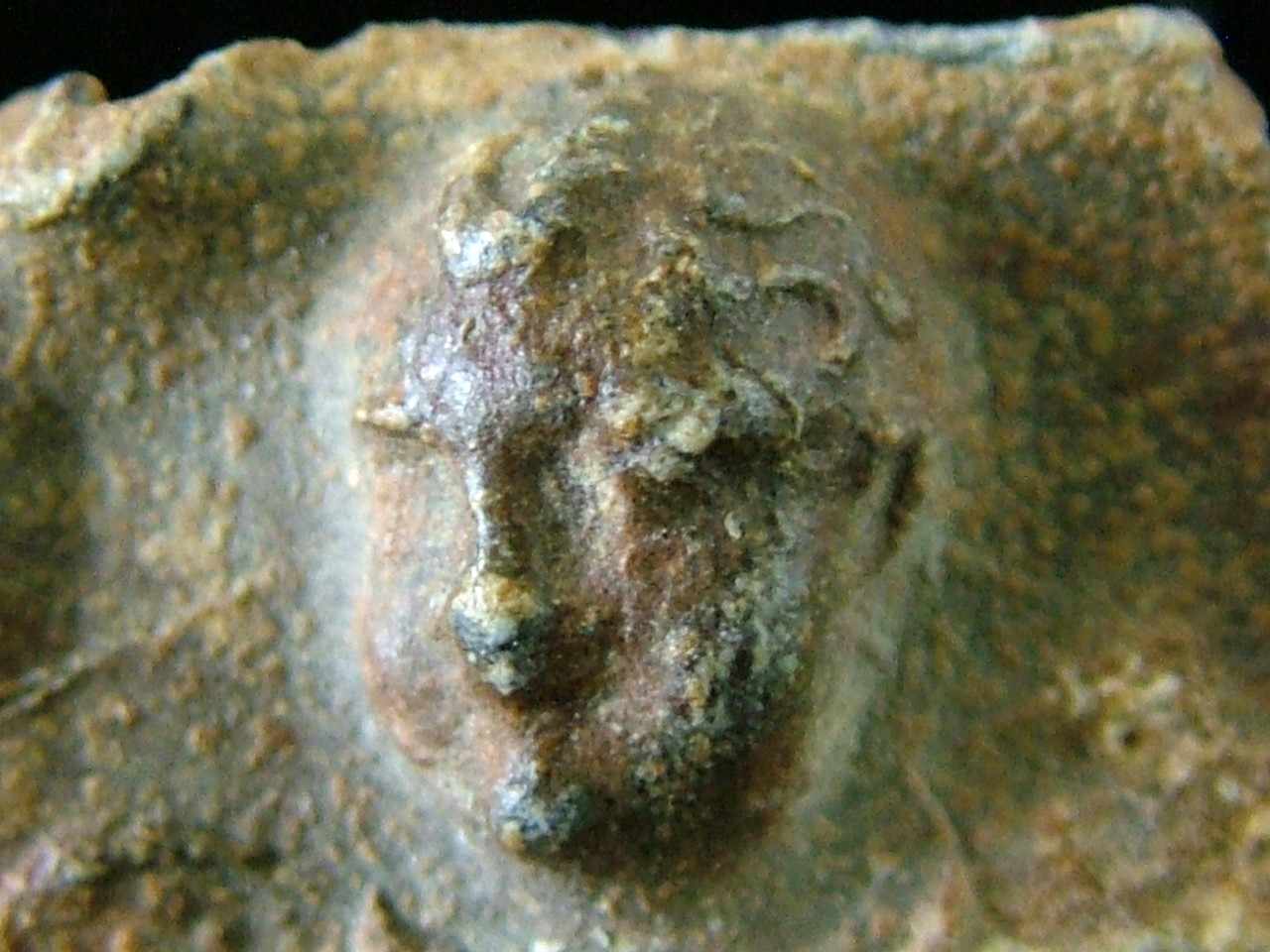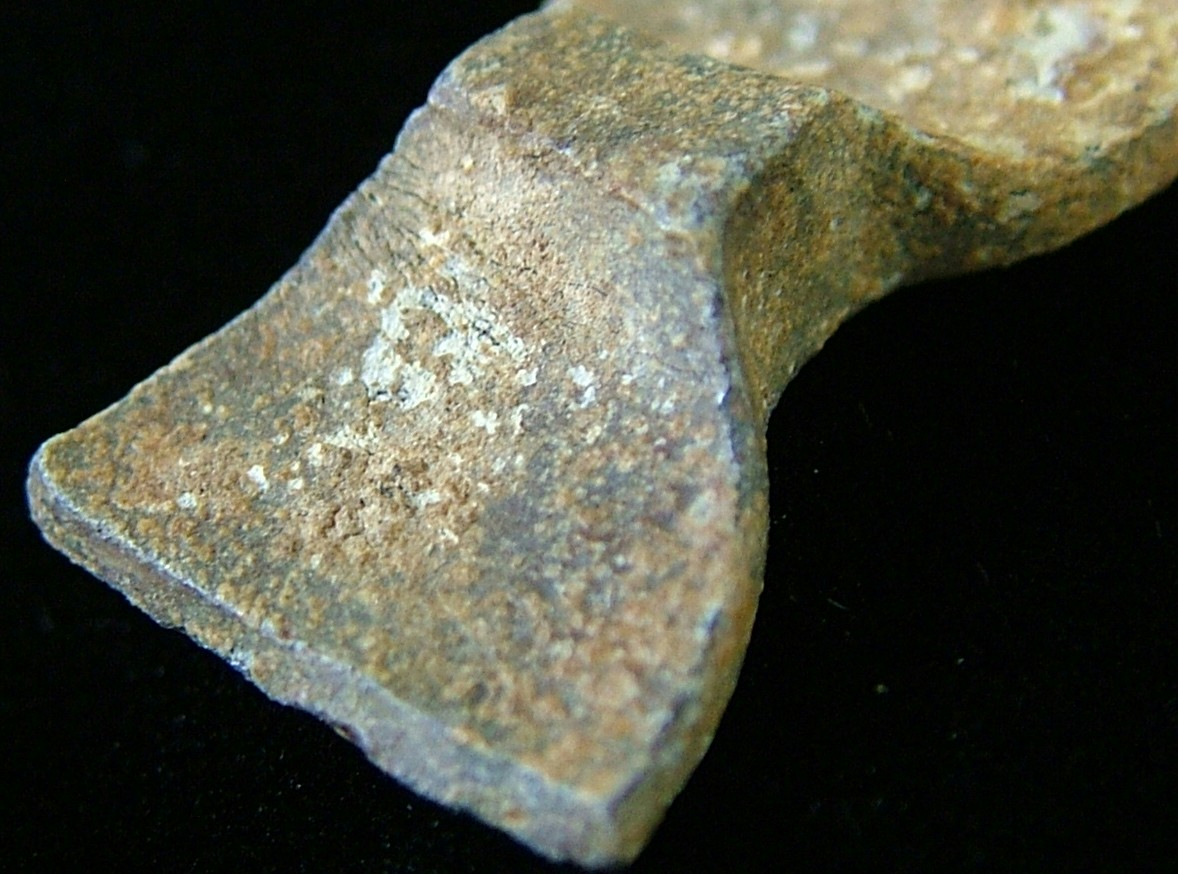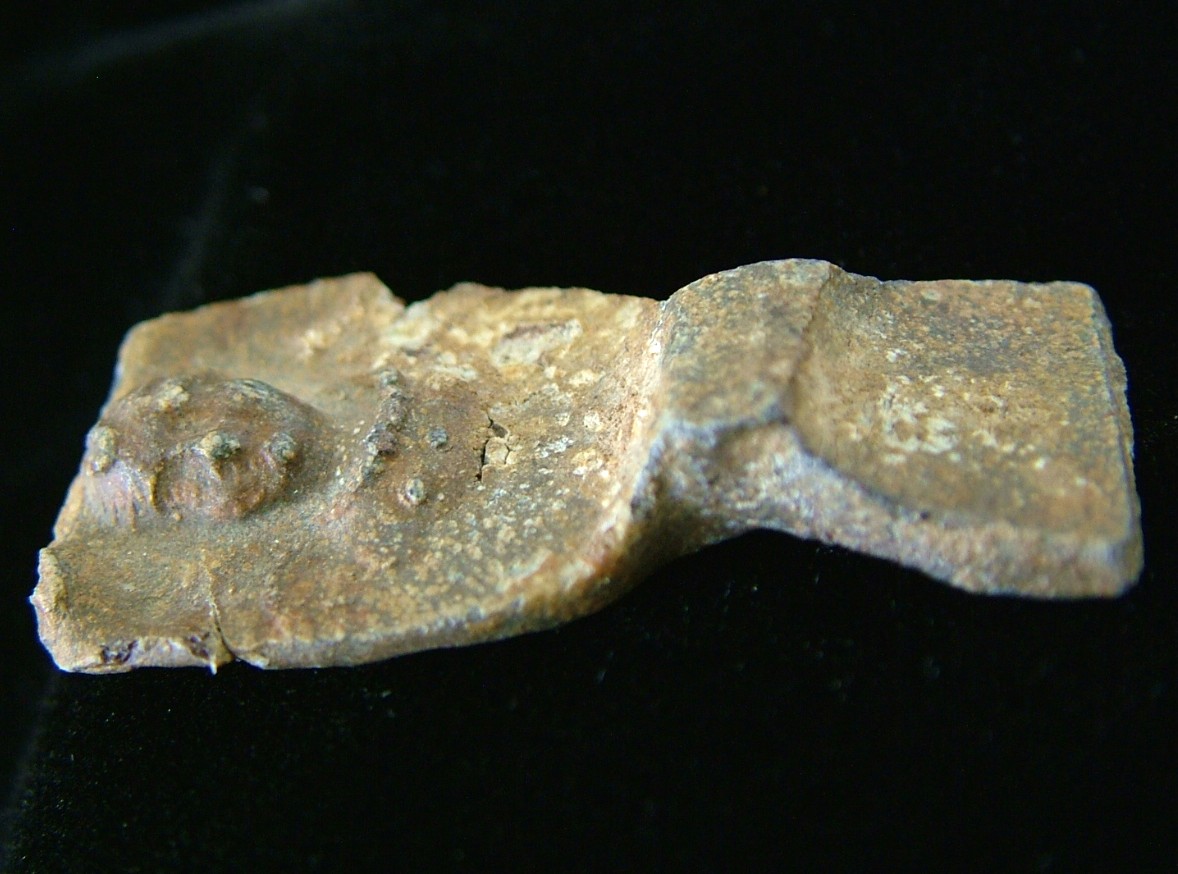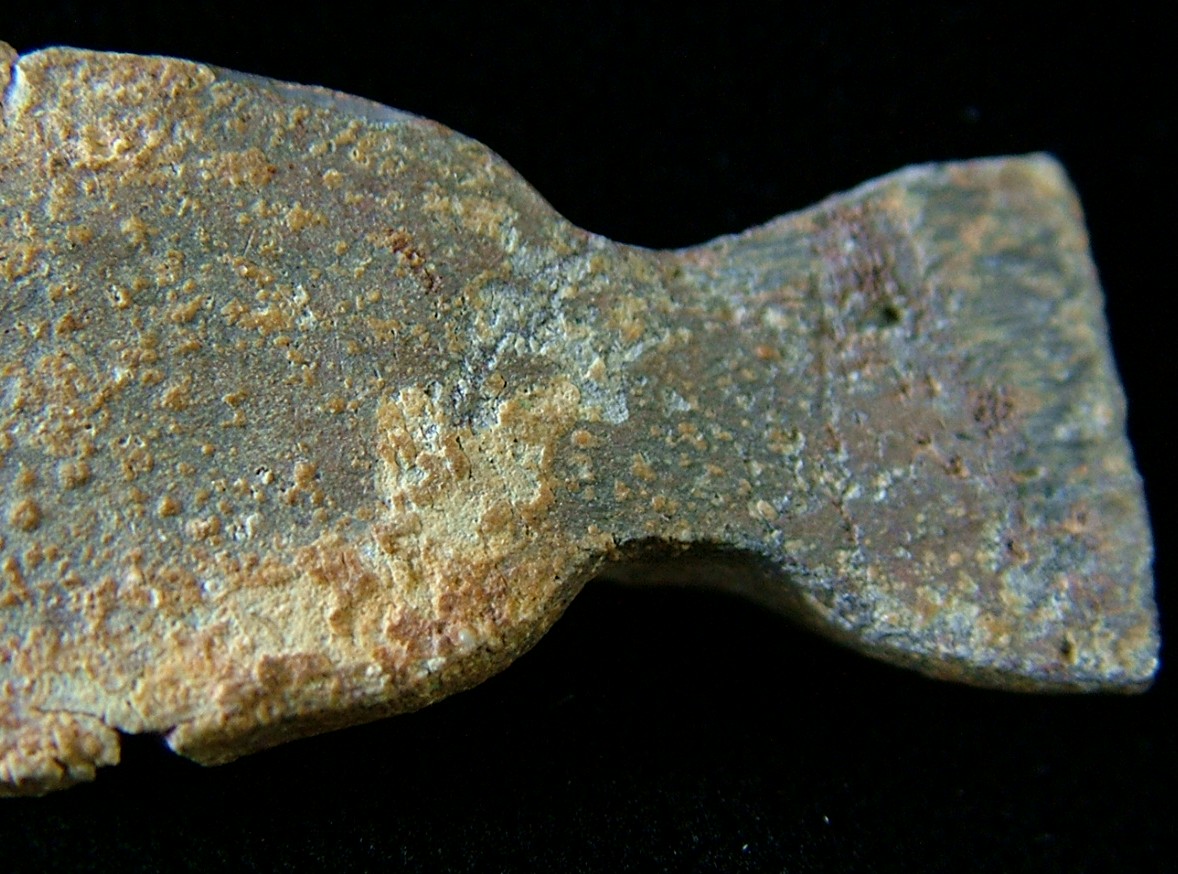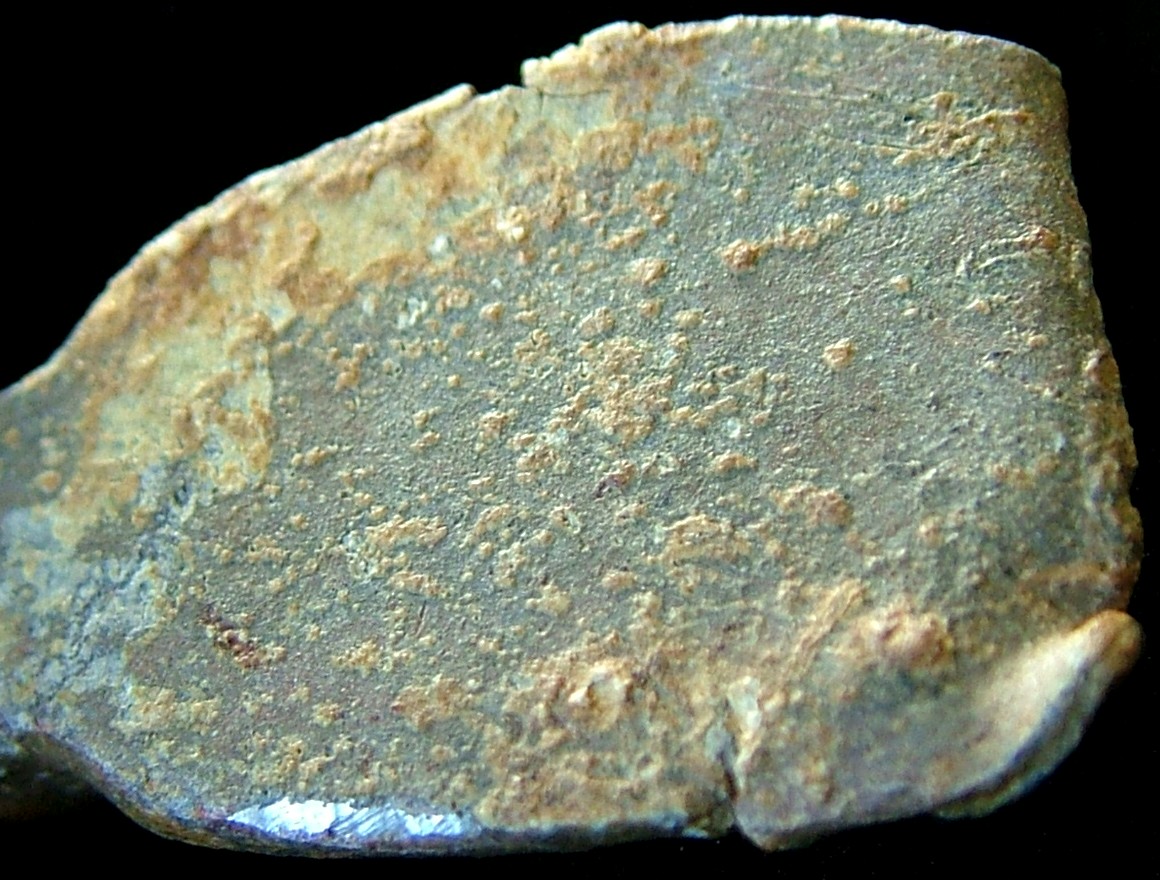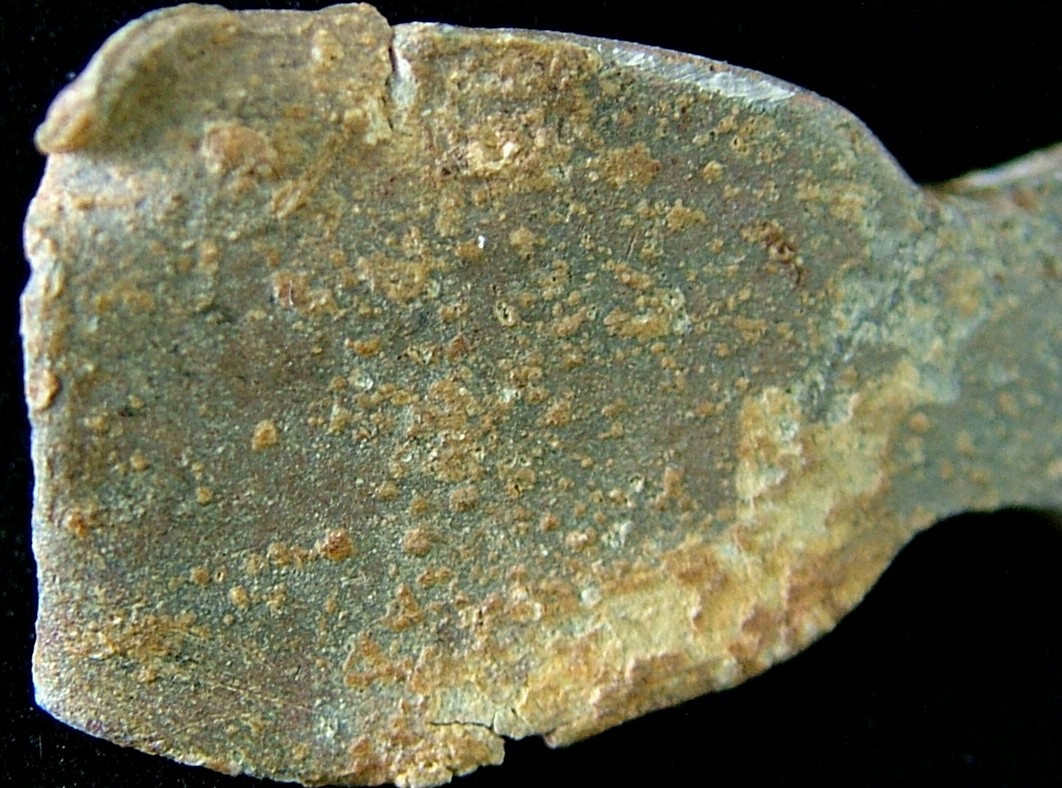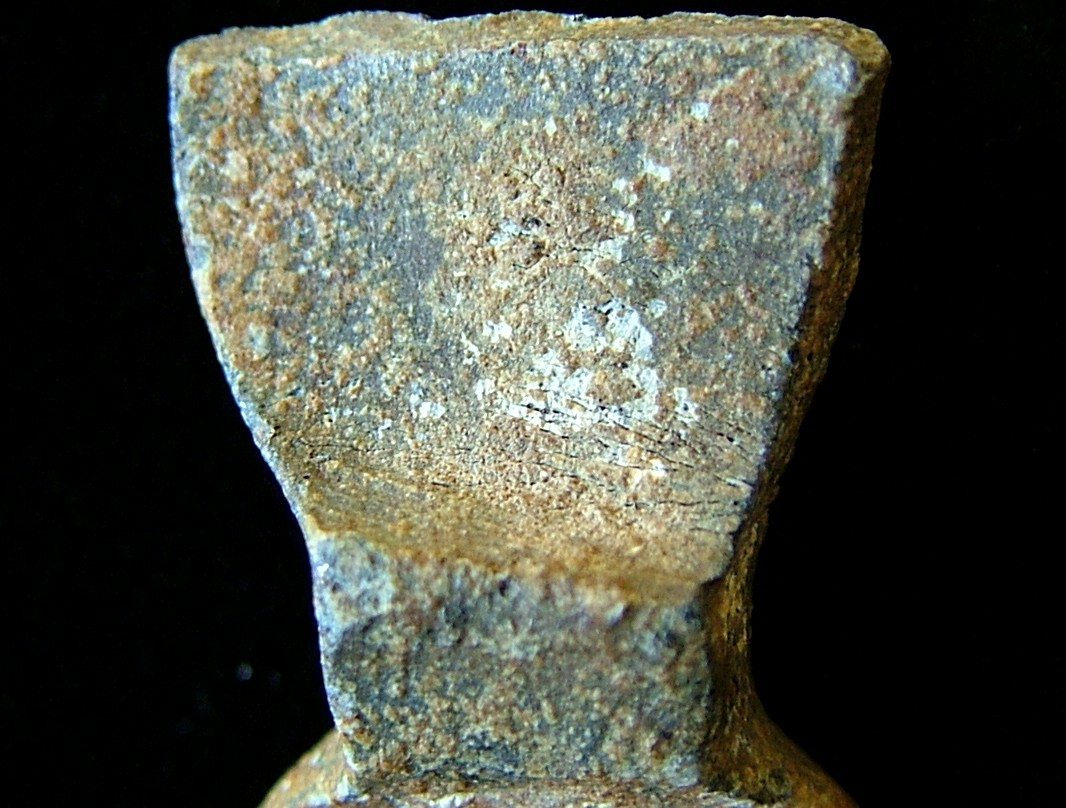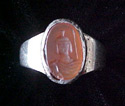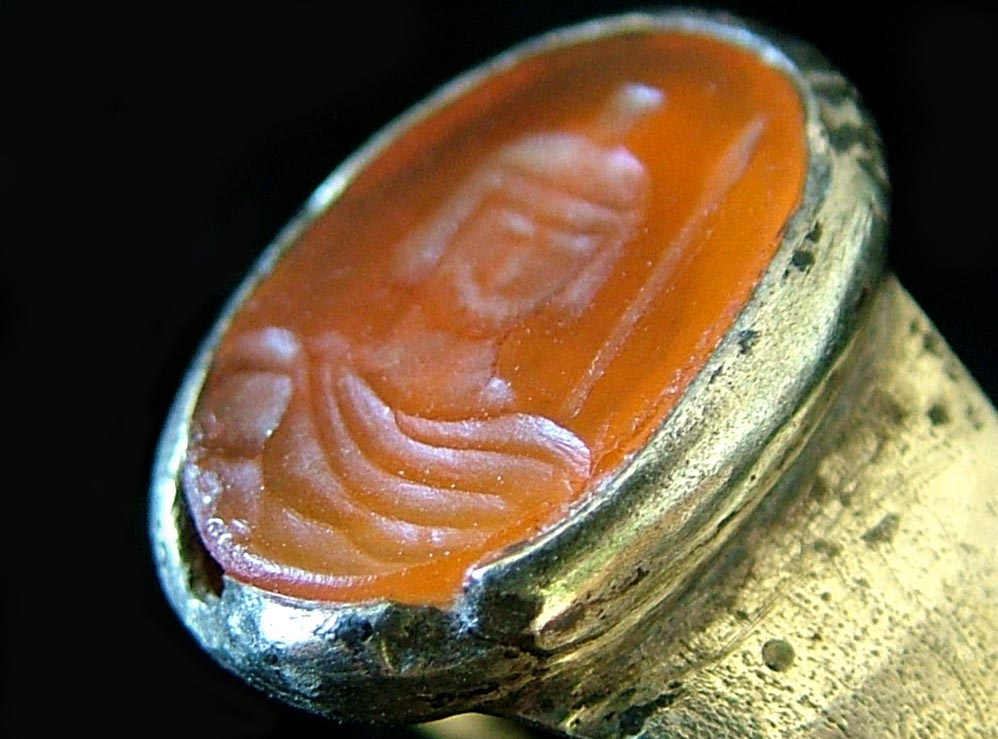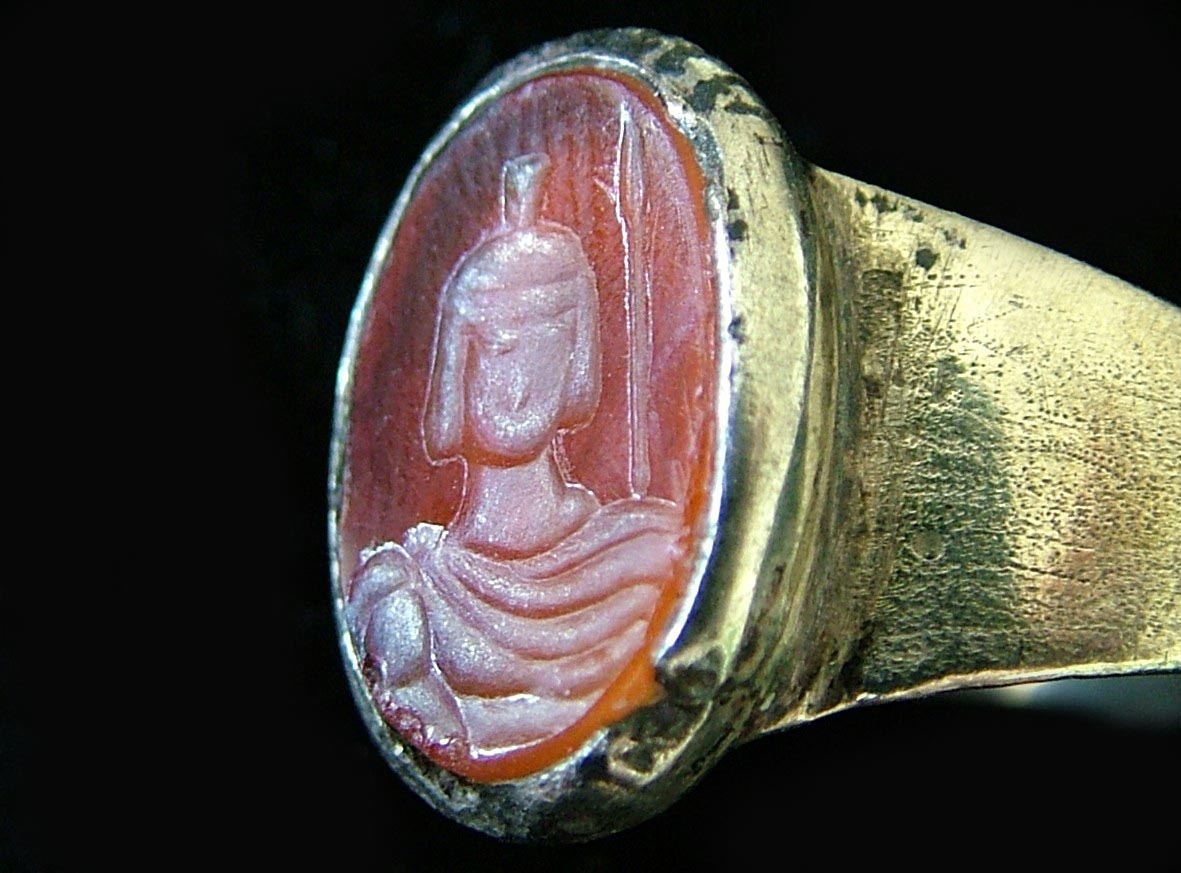 |
|---|
SALUTE TO VESPASIAN |
||
| |
||
| A SALUTE TO VESPASIAN |
||
My research with artifacts shows that the three Roman Emperors who excelled more then others at promoting their legend had been Augustus, Vespasian, and Titus, and that Vespasian with Titus had been the master promoters. Other research shows that the Flavian Amphitheater in Pozzuoli had been directly connected to the Flavian Amphitheater in Rome (the Colosseum), to those of a mystery cult it may in fact have been the primary Amphitheater. The reason for this appears to have been due to mystery beliefs concerning the Sybil of Cumae, the god Vulcan, Mount Vesuivius, and Mount Etna. Either by coincidence or otherwise at least one aspect of these beliefs may be over a half million years old. Details soon to follow.
ROMAN EQUITES SINGULARES AUGUSTI PRAYER / OATH ICON OF TITUS, Material: Lead and Paint The miniature art on this artifact shows what may be the greatest propaganda campaign in history. It is of the Emperor Vespasian and his son Titus as Roman (in essence "world") saviors. It is apparent that their spin masters took from the most powerful savior legends or myths of that period and projected them on the Flavian dynast. Some of the symbolism with this suggests that the Coliseum had been built with a hidden nautical theme (it was in fact built on"Nero's Lake"), if so then this may have been connected to the ancient mystery of magnetism and to Hercules Arctos (Hercules of The North as the lodestone). This theory may explain why the later Emperor Commodus was so intent on his contests in the arena as a Secutor (a gladiator that wore a helmet resembling a fish head and usual fought against the net and trident wielding Retiarius), but also as Hercules. Information with the "Roman Secutor Gladiator Ceremonial Gladius Of Commodus As Hercules Arctos" (that is with this collection) and information with other artifacts suggests that Commodus was planning a northern exploration expedition to find the origin of magnetic north (which I have speculated was viewed as the home of "Hercules of the lodestone" as "Hercules Arctos"). It can be surmised that he planned this in order to outdo the prestige of the Flavian Coliseum. What is a fact is that the art and inscriptions on the sword show that he was acting this out in a gladiator game, or games. The plans for this may have been two pronged, with one to launch from Northern Britannia and another to move along rivers to the Baltic Sea. |
||
| TROPHIES OF VESPASIAN / TITUS AND BUILDING THE COLISEUM |
||
Titus's face shows figures as his war trophies (and perhaps Vespasian), The front of his head and forehead has a Germanic Chieftain. Under this is a horizontal sword as his eyebrows, his nose has a white goatee bearded Jew on a short beaked bird's head. This should be one of the Jewish leaders of the 1st Rebellion (there are several to pick from), according to the information on the "Lion Of Judah Davidic Shield Ring Of The Sicarii Of The 1st Rebellion" (that is with this collection) a song bird was a symbol of King David. Other images have Titus holding a whip on his shoulders (Although not seen in these pictures the whip is marked Caesar). The collar rim of his cuirass armor is also the Coliseum, there are hints that it is being built, this is also suggests a necklace. On the sides it shows a plumed helmeted man octopus figure with a whip as if herding others (most likely gladiators) into the Coliseum. |
||
| THE RESCUE OF QUEEN BERNICE AND BERNICE AS THE BLACK PEARL OF THE COLISEUM |
||
This group of pictures shows the rescue of the Jewish Queen Bernice by Vespasian. Other pictures shows a pony tailed Bernice (suggesting that she was an equestrian) as a Black Pearl of the Coliseum. This may be due to speculations that Bernice's influence and money were partially responsible for the success of Vespasian in his contest to become Emperor. As the sister of the client King Agrippa II the Jewish rebels were as much her enemies as they were Rome's. There are other pearls, these may represent the wood gift balls (each ball had a gift inscribed in it) that Titus had thrown to the crowd for the inaugural games of the Coliseum. |
||
| THE RESURRECTION OF VESPASIAN |
||
This group of pictures is of a resurrection theme, the main event is from under a rectangle shield with two bosses. It suggests that Vespasian was thought to have been resurrected, although it may be Julius Caesar. What is most interesting is that this takes place in front of the Coliseum. This may be in line with the Etruscan origins of the gladiator with the funerary combat ritual of five prisoners of war over or near a noble's grave, the last combatant was set free. If you look very closely in Pictures 34 thru 36 you will see that the second "pearl" appears to be the helmeted head of a Centurion (due to the traverse crest over this), to the left there is a small figure coming from a crevice, there is a figure behind him. The Centurion may be wearing a nose ring (my research shows that this is a symbol of the Roman navigator and the north). This may suggest that at least some Centurions were members of a cult that included a resurrection in the northerly regions (in essence a bear cult), this may have been of Hercules as Hercules Arctos, this may have been open to Tribunes. If so then this hints that this may be one reason why Tribunes and Centurions are the preferred ranks mentioned in the Christian Bible (due to the Christian belief in resurrection). |
||
| VESPASIAN'S COMET |
||
This group of pictures shows a tall slim mountain, there are figures in a sleigh. There is a figure on a bee that is also a swan. It is streaking like a comet This is also a whip and a "V", the "V" should be for Vespasian, but it also may be for the goddess Venus, or even Vulcan, as if the figure is seen as riding backwards then he is holding a long sword in his left hand (notice that the blade appears as that of a Gladius Hispanicus). This may be the "Sword Of Mars" and, or the "Sword Of Cesear". As this the sword is with a figure riding a bee that is also a swan it may be connected to the Trojans (in a depiction of a Aeneas on a Greek vase he is shown with a sword that has a swan hilt). Pictures 13 thru 18 show a figure on the bottom with a harp, he is looking up at the comet (this may represent King David, if so then it is a play on Vespasian being recognized as the Jewish messiah), next to this figure are two white eyes (as if searching), in front of this is a slipper shoe with a ring, it is a type of boat and has to do due with navigation. When the piece is positioned vertically, the right hand corner it shows a scene with a central figure, this may have something to do with the comet figure |
||
| THE SWORD OF TITUS |
||
This group of pictures among other things shows a sword that will transform. When it is in the form of a Pompeii gladius (with a white hilt and black blade) it has on it a figure leaning over with a dog between it's legs, on this are the words "KALI", this is no doubt connected to the ancient metal smith tribe of the Chalybes who are thought by some to be connected to the legend of the sword Caliburnus (Excalibur). It shows that it is a pattern welded sword, possibly with supposed fragments of legendary sword blades. There are three hilts in succession. Extensive research shows that these sword hilts represent; the sword of Aeneas, the sword of Octavian, and the sword Titus. This has to do with Dido, Cleopatra, and Bernice. The message is clear, and that is that a leader of a people (to the Roman mind this is always a male) cannot allow the designs of an enchanting woman to supercede their responsibilities to lead. It should be noted that all three women were foreigners, so this message also includes keeping the women of Rome happy. To the Romans this was their idea of a legendary sword of success. It should be noted that in the next group of pictures "Vespasian Of The North Atlantic" the sword's hilt is shown with a swan or a duck's head. Research shows that either of these birds are symbols of the Royal House of Troy, there are indicators that the absolute original legendary Roman sword was the "Sword of Hector", most likely this was connected to a myth with the making of the "Sword of Mars". Pictures 11 thru 14 sword has a black bead that is a meteor, it may also be a black pearl. Picture 13 shows that the meteor streak is also a pipe. |
||
| VESPASIAN OF THE NORTH ATLANTIC |
||
This group of pictures among other things shows an ancient type of "Sword Of The Lady Of The Lake", although it is actually a "Sword Of The Lady Of The Ocean" and more specifically a "A Sword Of The Lady Of The North Atlantic Ocean" (Best seen in Pictures 5 and 6). To view this go to the vertical edge of the artifact, there is a hand with an upright sword with a cross guard. Research shows that this is based on myths of the Narwhal, the Narwhal can be seen behind the sword hilt / hand in Pictures 7 thru 9. On the sword's blade there is a sitting figure with a rope around his head, he is wearing a nose ring. Over this figure is another figure that has bright white eyes (suggesting a search). This should be a captive native mariner being forced to set a ship's course for a Roman captain. This all sugggests that when Vespasian was a Tribune with Legion II Augusta in Britain (operating in what is now Wales) that he had conducted some type of Atlantic Ocean exploration. This may have been a small coastal expedition that was viewed as a minor affair at the time. Later this may have been claimed to have had a connection to General Agricola's Fleet Prefect sailing around northern Britannia (Scotland), this included a claim that he had sighted Ultima Thule in 84 AD. The island that was sighted is thought by most to have been Shetland, although some purpose that he may have sighted Iceland. |
||
| VESPASIAN'S GERMANIC RITUAL |
||
This group of picture's shows the details of a Sword, a Stone Mountain, and a Sleigh. The mountain has a small opening, this suggests that it is of an initiation. These should all have to do with Vespasian and, or Titus with a Germanic ritual or myth. |
||
| VESPASIAN ARCTOS |
||
This group of pictures shows a child with a "V" on it's forehead holding a bee with a spiral stinger. The child can also apear as two figures facing inward. The upper right corner has an animal with a single horn on it's forehead. The horn has a human figure that is speared on it. This should be of Vespasian as an angelic youthful savior figure of the north. The bee may represent a Narwhal as an "Ocean Bee", or if you like a "Sea Bee". Copyright 2008 David Xavier Kenney Revised Aug 08 |
||
| |
||
| PRAETORIAN GUARDSMAN'S RING COMMEMORATING THE SIEGE / BATTLE OF JERUSALEM OF THE 1ST REVOLT
|
||
| Material:
Silver Alloy, Carnelian, and Trace Amounts of Niello Era: 71 AD Culture: Roman Style: Roman Origin: An Antiquities Dealer in New York This is a silver alloy and carnelian Roman intaglio ring that most likely belonged to a Praetorian Guardsman. The ring is an American size 11. Our archive is still under construction; once completed it will include detailed information and pictures of this artifact. The ring appears to be initialed by the intaglio maker; this will be researched at a later date. On the ring's band is art that commemorates the Siege / Battle of Jerusalem of the 1st Revolt; it is made in a scratch and dotted graffiti style. There are various inscriptions, two of these are abbreviations of the Praetorian Guard (P PR) and Legion XV Apollinaris (LEG XV AP). The art and technique on the intaglio is highly sophisticated. It was done with various levels of very refined miniature work and a gold wash. Much of the miniature art on the face and helmet has to do with rituals to the god Sol Indiges. Most of the miniature work is not displayed with the pictures that are provided here. The ring appears to have a small amount of damage to its bezel and intaglio. Upon close inspection it shows that this is not so, and that it was purposely made this way. The figure on the bezel is not a Praetorian as such, but is the figure of a god whom the Praetorians evidently worshiped, Quirinius (this Romulus deified by having been given the identity of the Sabine war god Quirinius) , but it is also of Titus (perhaps as a Praetorian Prefect, a General, or as Emperor). The spear has engravings and inscriptions around it. There is a ship that may also be seen as a sheath of a grain; on this are the letters "SOL" and Etruscan letters. Above this area is a figure who may be the god SOL. The inscription is similar to that which appears on the lance head of the "Roman Bronze Mars Quirinius (War Romulus) and Bellona Statue" that is included with this collection. Due to this there are hints that Mars Quirinus had a solar cult of a death; a night journey, and a return. The spear or lance would represent a ray of the sun (a symbol of perseverance). The following are speculated to be primary symbols of a proposed Roman Praetorian (and possibly a Roman Officer) state cult; a Roman Attic Helmet (Quirinus / Mars), a cup (Sol Indiges), a spear or javelin (Sol Indiges), an agrial flagellum (Quirinus / Mars as a fertility figure), and a cloak (Sol Indiges). Secondary symbols may be a certain type of fibula and a muscle cuirass armor*. Interestingly the bezel has an engraved scorpion tail which also forms a whip/flagellum around the intaglio. The scorpion was a primary symbol of the Praetorians, and is speculated to be symbolic of Tiberius's birth sign (Scorpio). However, considering this new information, this may or may not be so. The scorpion whip/flagellum when turned slightly will change into an Ouroboros (serpent biting it's tail). When moved slightly the Ouroboros's head can also be seen as a bird's head with an open beak and the tail as a sword fish (the bird's open beak is swallowing the swordfish's bill). The bird's beak and sword fish's bill may be of an unknown mythology of the wood pecker's tough beak (with the Omphalos as the wood pecker's opening to it's nest). The wood pecker was sacred to the Romans as the bird of Mars. The Omphalos's head is situated near the small opening on the ring that will be discussed shortly, it has the following on it: A wolf biting a bear on the forehead, the bear has a fish body. Two figures in front of a stepped pyramid with a box on top and a disc over it. With this is an inscription that reads "A R I S" (the letters are also very small figures), under this in smaller letters is "C O S", then under this there is a large letter "L" (it is directly over the disc). When tuned to another position it shows the head of a water serpent, this can also be seen as two human bee figures. When turned again this will change into an Omphalos (naval stone), when turned slightly it will change into a head wearing a mitre. When turned once more it will change into a swan or duck's head (this may symbolize the Trojan Royal House), inside the swan's head there are two figures in a fish, overhead there are the letters "M S I L O". It should be mentioned that an Omphalos with wings is also seen on the statue previously mentioned, it is located on the back of the floor of the chariot . Among many other things, there are miniature iconography/inscriptions on the inside of the bezel under the intaglio, some of which can be viewed from a small opening between the bezel and intaglio (this is the area that at first glance appears to be gouged out by damage, but is actual intentionally formed as such). In a certain position this small opening will appear as if illuminated, which is caused by the light penetrating the carnelian and being reflected by the bright metal. There are various small figures that will change when moved, and there is an inscription that reads "Q M R" (Quirinus Mars Romulus). This inscription is similar to the one seen on the inside of the chariot of the statue that was previously mentioned. To the right of this there are several figures that transform into a large face, there are also hints of a helmet; under this area are the letters "R O M" (Romulus). All this should suggest that there was a cave type shrine dedicated to Quirinus Mars and Sol Indiges on the Quirinal Hill. This may or may not be in line with the recent findings of Archeologist Andrea Carandini of Rome University. Either way, the new information associated with this ring suggests that besides the fact that there was a state cult of Quirinus (Mars Quirinus), there was also a Praetorian (and most likely Roman Officer) cult. Under the bezel on the inside of the ring there is a long building column / capital with engraved figures, it also has long engraved figures on either side, one of these is woman in a headdress (Rhea Silvia) holding a sitting boy in a pilus hat, the boy has one wing that is shaped like a wolf's head (this wing / wolf's head is also as a mount for a female rider, perhaps the goddess Diana), when slightly turned the boy's head changes into two faces that are looking backward (Romulus and Remus). Over this is a scene with the god Mars (identified due a horned helmet and the letter "M") seducing the woman in the headdress, behind Mars there are two boy's or young men's faces (Romulus and Remus). When the ring is turned upside down it shows other figures. This column is also a tree trunk; on it there is a lightning bolt, a javelin or pilum, two men's faces in profile with a third as a semi-fish head. The faces are intertwined with; a bear's head, a wolf's head, and a cow or bull's head. Below this is a fat bearded man with breasts(most likely Vulcan). All these together, including the boy in a pilus hat make for a large woman's head and bust in profile, she is wearing a helmet (or helmet type headdress) with a fish head, this may represent a mystery goddess of the Vulcanalia festival that was held on 23 August, during this festival fish and small animals were thrown into a fire. Due to the great fire of 64 AD an alter to Vulcan was put on the Quirinal Hill, it is thought that this was by order of Emperor Domitian. It appears that this represents a column / tree trunk that was central to an older belief and ritual, it's location on this ring suggests that it was hidden under a cave shrine, it may have been from an ancient temple**. Due to the possible importance of these new findings, there will be at least some research and additional photographs taken, which will be posted as soon as possible.. * Some of these symbols appear in later Christian iconography, there may or may not have been a connection, either way they suggest that the Praetorians (and possibly all Roman Officers) identified with a state cult of Rome's founder (Romulus) as the god Quirinus with his god father (Mars) regenerating with the assistance of Sol Indiges. This may have to do with; the winter solstice, fertility, the spring equinox, agriculture, and war. Some of this may also be associated with the story of the Trojan Prince Aeneas and the founding of the Roman race. If all this is so, then the cult of Quirinus may very well be the secret of Rome's long existence. ** The column / tree trunk area has a layer of fossilized charcoal soot mixed with a resin, it is part of the art technique. This is only known due to the same with scratched art on a Nordic stone age knife. Why this type of art medium is on this area of the ring is not known. It could be speculated that this charcoal had been used in a special offering. although there may be more exact answers with the miniature art. So far there are hints that this may be connected to the Vulcanalia, and perhaps even to the great fire of 64 AD. If so then the primary message of the iconography is truly one of Roman regeneration. Copyright 2008 David Xavier Kenney Revised Nov 08 |
||
| Title
|
||
| Information |
||
| Title
|
||
| Information |
||
| Title
|
||
| Information |
||

